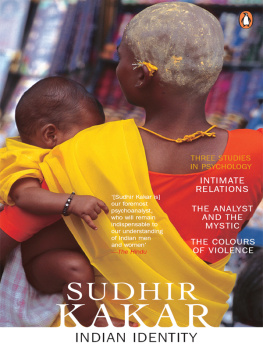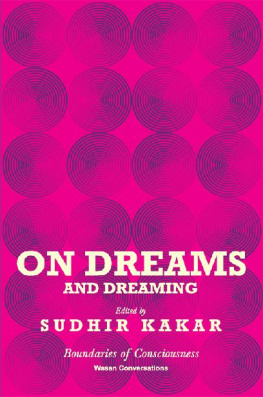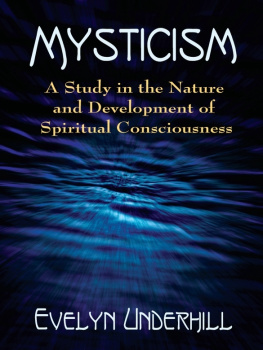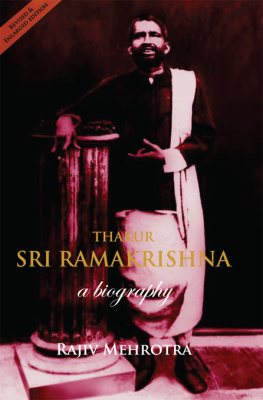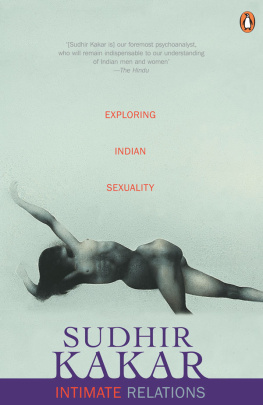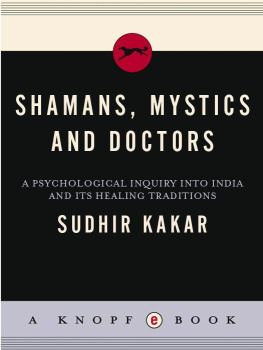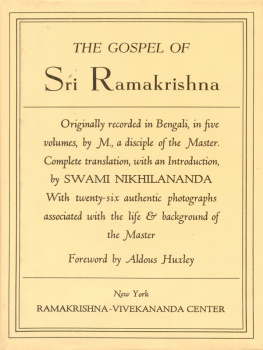An internationally renowned psychoanalyst and writer, Sudhir Kakar has been a visiting professor at the universities of Chicago, Harvard, McGill, Melbourne, Hawaii and Vienna, and a Fellow at the Institutes of Advanced Study, Princeton and Berlin. Currently, he is Adjunct Professor of Leadership at INSEAD in Fontainbleau, France. His many honours include the Bhabha, Nehru and National Fellowships in India, the Kardiner Award of Columbia University, the Boyer Prize for Psychological Anthropology of the American Anthropological Association, and Germanys Goethe Medal. The leading French magazine Le Nouvel Observateur listed him as one of twenty-five major thinkers of the world.
Sudhir Kakars books, both non-fiction and fiction, have been translated into twenty languages. His non-fiction works include The Indians: Portrait of a People; The Inner World: A Psychoanalytical Study of Childhood and Society in India; Intimate Relations: Exploring Indian Sexuality and The Colours of Violence. His three published novels are The Ascetic of Desire, Ecstasy and Mira and the Mahatma. He has also translated (with Wendy Doniger) Vatsyayanas Kamasutra.
Preface
Two years ago, I was invited by the Divinity School of the University of Chicago to deliver its Haskell Lectures in the area of comparative religion. I accepted this invitation with alacrity. It encouraged me to return to a field which I had reconnoitered in an earlier work on the healing function of religion and of such religious functionaries as shamans and mystics. After a decade-long intellectual exploration into the vagaries of sexual love, I welcomed the chance to once again engage with this other major area of human transcendence.
In retrospect, it seems inevitable that the focus of these lectures would be ecstatic mysticism, which signifies both a continuity with and departure from my preceding preoccupation with eroticism. Like the lover, the emotional mystic too strives for the transcendence of personal boundaries in an ineffable union with the other, though in case of the latter the other is spelled with a capital O. The fervor of erotic passion, we know, only recognizes the spontaneity of religious passion as its equal and, in some cultures and at certain historical periods, even as its superior. I thus came to ecstatic, emotional mysticism with a curious sense of familiarity which I hoped would permit me access to its strangeness.
Mysticism for me is not something that lies outside the vast spaces of the human mind. Its insights, experiences, and yearnings are a heritage of our condition as human beings; they are a part of our humanity. Shorn of religious trappings, the mystical quest is not apart from the dailiness of life but pervades and informs life in its deepest layers.
I have approached the mystic as a psychoanalyst approaches a subject in the clinical encounter, with empathy, respect, and a sense of the complexity and wonder of human life. My intention has not been to pursue any reductionistic agenda, to shrink the mystic, but rather to expand our understanding of his mystery and, ultimately, of the working of our own selves. Of course, given the nature of my discipline, the understanding of mysticism and mystical experiences I aim for is necessarily in a psychological mode. The psychological understanding, I hope, complements other kinds of understanding; it does not replace them. A psychological appropriation of mysticism is certainly not the intention of these reflections. Yet, if my endeavor, like those of the analysts before me, brings the mystic down from the level of divine to that of human, I console myself with the thought that it may also help in raising the rest of us by making us more aware of our own sensuous and psychic potentials.
Traditionally, psychoanalysis has viewed art and science as valuable sublimatory creations. On the other hand, it has often seen in mysticism in particular and religion in general a regressive return to the protective beings (and being) of infancy and early childhood. Mysticism, I try to show in this book, is a radical enhancement of the capacity for creative experiencing, of the ability to experience with all ones heart, all ones soul, and all ones might. It requires that the mystic undergo a creative immersion in the deepest layers of his or her psyche, with its potential risk of phases of chaos and lack of integration. The mystical regression is akin to that of the analysand, an absorbing and at times painful process at the service of psychic transformation. It differs from most analyses in that the regression is deeper. Where the mystical ability to experience profoundly is sought to be enhanced within a master-disciple relationship, as in most schools of Hinduism, Buddhism, and Sufism, the potential mystic may be better placed than the analysand to connect withand perhaps correctthe depressive core at the base of human life which lies beyond language. Psychically, he or she is also more endangered. Mystical techniques in the master-disciple relationship, compared to those of psychoanalysis, are thus designed to foster radical regression, and the role of the master guru, pir, roshiis better understood by taking recourse to the concepts of the more relational analysts such as Donald Winnicott and Heinz Kohut, rather than by remaining within the paradigm of classical psychoanalytic theory with its motivational emphasis on drives and defenses.
The illustrative examples for my arguments are preeminently drawn from the Hindu religious tradition. Following a time-honored psychoanalytic usage where one strives for an in-depth understanding of a single case history in the hope that it may later prove to be representative for a host of other similar cases, I have tried to organize my observations and understanding of mysticism around the person of a single mystic, the nineteenth-century Hindu saint, Shri Ramakrishna. I have sought to discuss in detail three interacting factors in his storyparticular life historical experiences, the presence of a specific artistic or creative gift, and a facilitating cultural environmentwhich I believe may well go into the making of a mystic, at least of the ecstatic variety.
The first chapter of this book was also presented as an invited talk to the Canadian Psychoanalytic Association in Montreal The comments of my Canadian colleagues were most helpful I am especially thankful to the discussant of the paper, Dr. Eva Lester, for her helpful input which I have incorporated gratefully into the text.
1
Ramakrishna and the Mystical Experience
Of the many ways of inner transformation known to man, the mystical path is perhaps one of the most ancient, universal, and highly regarded, even when its practitioners have often lived in an uneasy truce, if not in frank antagonism, with the established religions of their societies.
The mystical path may be one but has many forks. Scholars of religion have distinguished them in various ways. Nathan Sderblom talks of mysticism of the infinite, an elevation of awareness where the unifying experience with the suprahuman eliminates perception of the concrete and abstract elements from the sensate world. He contrasts this to mysticism of personal life where the experience is not rooted in ecstatic rapture, but in a meeting with God in the midst of lifes problems and struggles, a meeting experienced at a deep level of faith within normal waking consciousness. Martin Buber and John of the Cross would be two exemplars of Sderbloms mysticism of personal life. Of course, such distinctions are more sign posts rather than sharp dividers since shades of both infinity and personality will exist in every mystic.


